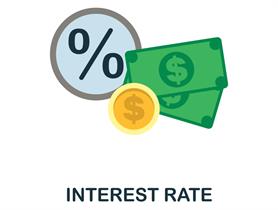PDF chapter test TRY NOW
Interest is the amount of money that is paid for the use of borrowed money.
Let a person '\(A\)' borrows some money from '\(B\)' for a certain period of fixed time at a fixed rate, then '\(A\)' will pay the borrowed money along with the additional money, which is called interest.
There are two types of interest:
- Simple interest
- Compound interest.
In this chapter, we are going to learn about Simple interest (\(I\)). Before that, we should learn some basic terms deals with interest.
- Principal
- Amount
- Time
Principal \((P)\):
The money borrowed or lend out for a certain period is called the "principal" or the "sum".
Amount \((A)\):
- The sum of the interest and principal is called the amount.
- \(\text{Amount (A)} =\) \(\text{Principal (P)} +\) \(\text{Interest (I)}\).
Time \((n)\):
The duration of the period for which the money is borrowed is called the time.
Rate Interest per Annum \((r)\):
If interest is payable yearly for every \(100\) rupees, then it is called rate per cent per annum.

Rate is denoted by \((r)\), and rate percentage is denoted by .
Interest is generally given in per cent for \(1\) year per annum. Suppose the bank gives an amount of \(₹100\) at an interest rate of \(₹\)4, it is written as 4\(\%\) per year or per annum or in short 4\(\%\) p.a. (per annum).
It means on every \(₹100\) borrowed, \(₹\)4 is the required interest to be paid for every one year.
Example:
Vijay takes a loan of \(₹\)50000 at 5\(\%\) per year as the rate of interest. Let us find the amount he has to pay at the end of \(1\) year.
Sum borrowed \(= ₹\)50000.
Rate of interest \(=\) 5\(\%\) per year.
This means if \(₹100\) is borrowed, he has to pay \(₹\)5 as interest. So, for the borrowed amount of \(₹\)50000, the interest for one year would be:
\(= ₹\)2500.
So, at the end of \(1\) year, Vijay has to give an amount, which is the sum of principal and interest.
That is \(A = P + I = ₹\) \(= ₹\)52500.
